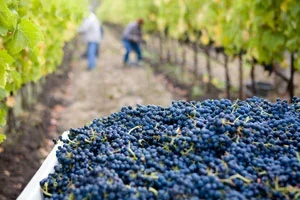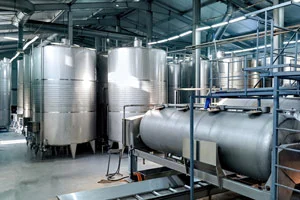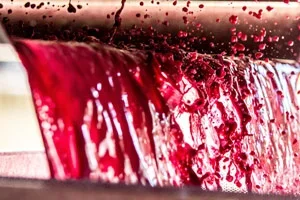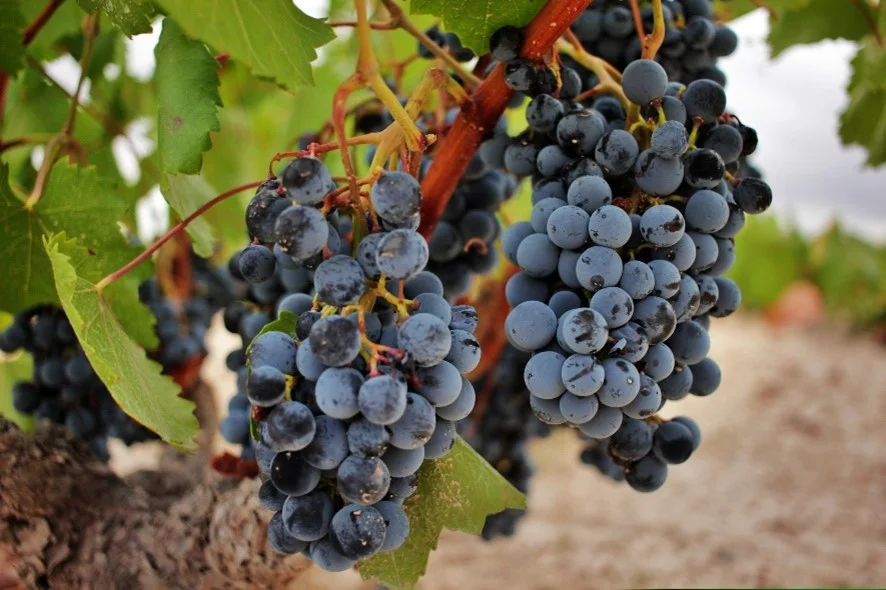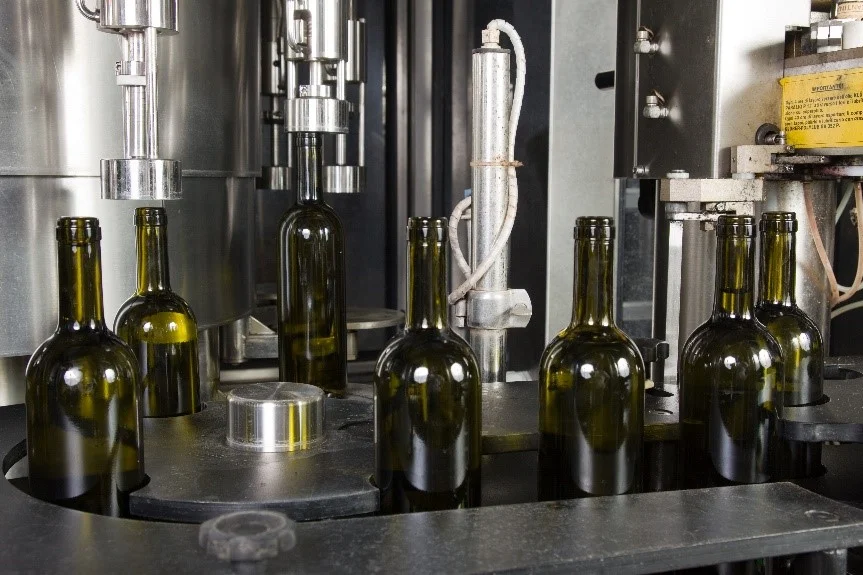The summer of 2022 will be remembered for a long period without rain, heat waves recording extreme temperatures for weeks at a time and, as a consequence of this climate, one of the summer seasons with the highest number of hectares affected by fires in Spain ever, with more than 220 thousand hectares burned according to the EFFIS.
This has led us to start talking about a term we don’t hear very much in Spain, but is well known in other New World viticulture areas, such as Australia and California. We’re talking about Smoke Taint.
What is Smoke Taint?
It’s the effect on wines prepared with grapes from areas near a fire. The presence of fires, or simply the smoke from them, creates a high concentration of volatile compounds in the air that are easily absorbed by the vine, stored in the berries and transferred to the must during maceration. This leads to wines with characteristic aromas and flavours (smoke, bacon, campfire and ash) considered a defect as they are unpleasant and persistent in the mouth during consumption.
| Compound | Descriptor | Detection threshold in red wine (μg/l) |
| Guaiacol | Smoke, medicinal | 23 |
| m-cresol | Tar. Medicinal, phenolic | 20 |
| p-cresol | Tar, Medicinal, phenolic | 64 |
| o-cresol | Tar, Medicinal, phenolic | 62 |
| 4- Methylguaiacol | Vanilla, calvo, smoke | 65 |
| Syringol | Smoke, charcoal | – |
| 4- Methylsyringol | Smoke, charcoal | – |
Image 1. Volatile compounds present in wines affected by Smoke Taint.
Source: Sensory impact of smoke exposure The Australian Wine Research Institute.
The compounds responsible for Smoke Taint, which can serve as markers of the type of effect in an analytical determination (Table 1), are stored in the grapes together with the sugars. These present molecules are non-odorant phenolic diglucosides, which can be released and give rise to volatile compounds through the enzymes present during alcoholic fermentation, or the enzymatic activities of saliva during wine consumption.
Working with grapes affected by Smoke Taint
The compounds responsible for the Smoke Taint will be transferred to the must during the first stages of production. Therefore, we need to start at the time of reception to minimize the presence of these compounds in the final wine.
- Harvest and reception of the grape:
- Manual harvesting minimizes the rupture of the grapes.
- Exclusion of all vegetal material that could increase the phenol content.
- Reduction of physical processes.
- Conservation of the fruit at low temperatures (T<14ºC) to diminish extraction processes.
- Decrease or elimination of maceration times in white wines.
- Pressing of whole bunches in whites and rosé.
- Separation of press fractions.
- Working with the must:
- Use of enzymes with β-glucosidase activity that allows the release of phenols for their subsequent elimination.
- Application of adsorbent carbon in high doses.
- Flotation with specific high-quality clarifiers with phenols.
- Getting musts with low turbidity.
- Alcoholic fermentation:
- Yeasts with fast fermentation kinetics.
- Reduction of maceration in reds.
- Increase of exogenous turbidity in whites and rosé.
- Use of ester-forming yeasts to mask phenolic aromas.
- Application of low-toasting alternatives to increase the complexity of the wine.
- Application of yeast hulls with high adsorption capacity.
- Use of polysaccharides to improve the mouthfeel of musts treated with charcoal.
- Conservation and bottling:
- Conserving the wine at low temperatures to reduce the enzymatic activities that release phenols.
- In case of high levels of compounds causing Smoke Taint
- Addition of β-glucosidase enzymes.
- Treatment with charcoal.
- Application of low-toasting alternatives to increase the complexity of the wine and mask the phenol aromas.
- Rapidly rotating wines to reduce the release of smoke aromas associated with aging.
What does the Agrovin Group propose to help treat Smoke Taint?
At the Agrovin Group, we want to offer proposals for elaborations that have been affected by smoke from fires.
- Cleaning of white and red musts:
(Getting musts with low turbidity)
Enozym Extra Arome – Enzyme with high Pectinlyase (PL) activity and β-glucosidase activities for application to must after pressing (it is not advisable to macerate grapes affected by fire smoke)
- Working dosage: 2-3 ml/hl for the maximum action of the β-glucosidase activities
Divergan – F: PVPP with high affinity for polyphenols. It is advised to use prior to flotation.
- Working dosage: 30-40 g/hl when filling the deposit.
Croer DO: plant-based oenological charcoal with a high capacity for adsorption of volatile compounds.
- Working dosage: 40-60 g/hl 3-4 hours after the adding of the enzyme.
Vinigel FL or Vinigel Cristal: High molecular weight gelatins for a flotation process which guarantees the presence of a high amount of activated charcoal.
- Working dosage: Vinigel FL 6-10 g/hl / Vinigel Cristal 60-100 ml/hl during flotation.
- Alcoholic fermentation:
(Increase in exogenous turbidity – Speed of fermentation – Increase in aromatic complexity)
Whites and rosés
Actimax VIT: inactive yeast that increases the turbidity of the musts providing survival factors, vitamins and minerals.
- Working dosage: 5 g/hl increases turbidity as 30 g/hl of cellulose, adding from the beginning of alcoholic fermentation.
Actimax XL: complex nutrient with cellulose in its composition.
- Working dosage: based on the YAN needs. Add starting at a density of 1060.
Spirit WHITE: alternative fermentation with low roasting for the production of white wines.
- Working dosage: 1 g/l at the start of alcoholic fermentation.
Reds
Spirit NATURE: non-roasted fermentation alternative with a long drying period.
- Working dosage: 2-3 g/l at the start of alcoholic fermentation.
Manno AROME: Contribution of polysaccharides and ellagic tannin to increase the wine complexity and improve the centre of the mouth affected with the use of charcoal.
- Working dosage: 30-40 g/l starting with a density of 1060.
Actimax Corcell: Yeasty rinds with high adsorption capacity.
- Working dosage: 20 – 40 g/l starting with a density of 1030.
- Wine conservation:
Enovin VARIETAL: enzume with β-glucosidase activity.
- Working dosage: 3-5 g/hl in wine affected with Smoke Taint aromas.
Croer DO: plant-based oenological charcoal with a high capacity for adsorption of volatile compounds.
- Working dosage: 40-60 g/hl 7-10 hours after the adding of the enzyme.
Spirit: range of low-roasted alternatives for the contribution of sweetness and complexity that mask the phenolic aromas.
Spirit CANDY: alternative in topping format.
Spirit PURE: alternative in chip format.
- Working dosage and time used based on objective sought.
